Q: Greg I’m wondering if you could update the ill-fated Chevy Cadet you wrote about four years ago? Can you tell me about the Cadet and why it never came to market? I remember that the founder was Earle MacPherson who also invented the strut suspension. Thanks for your weekly nostalgia columns as I look forward to them every week in the Shamokin and Bloomsburg newspapers, and also in Auto Round-Up magazine. Thanks, Frank Burke, Mt. Carmel, Pa.
A: Frank I’m happy to do it as the Chevy Cadet deserves another look based on reader interest and the fact that the car could well have been a huge sales success post war WWII for General Motors (GM).
Full disclosure necessitates I let my readers know that Frank Burke from Mt. Carmel, Pa. is a close friend and known to many as a former top notch race track public address announcer and late model stock car racer. He still does lots of public address work at events, including those at the Eastern Museum of Motor Racing (emmr.org) in Dillsburg, Pa. and many car shows, including Dragfest Indoor Drag Racing Showcase and Car Show held yearly in Lebanon, Pa.
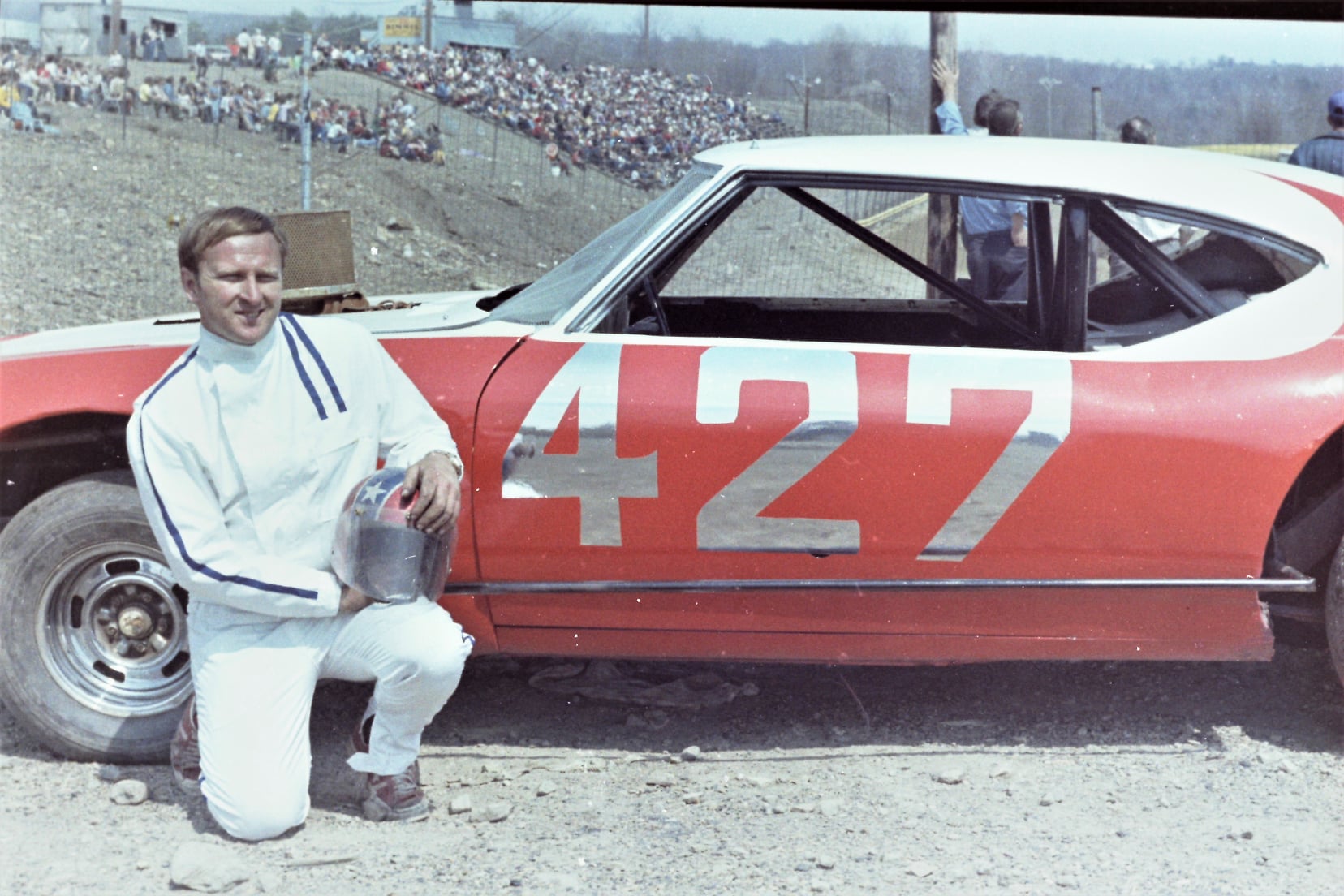
Frank Burke and his No. 427 Chevy late model stock car at Big Diamond Raceway in Minersville, Pa., back in the early 1980s. (Zyla Photo Collection)
As for the Chevy Cadet, it’s quite the story, especially considering the person that designed the car is the same person that invented the “strut” suspension that is still used today in tens of millions of cars.
Specifically, the Chevrolet Cadet was designed by none other than Earle S. MacPherson, known worldwide as the inventor of the MacPherson strut suspension. Born in Highland Park, Illinois, in 1891, MacPherson served in WWI where he earned the rank of Captain. Before his stint at GM, he worked for the Chalmers Motor Company and Liberty Motor Car Company in the early 1920s, and prior to joining Hupmobile in 1923. In 1934 he joined General Motors, becoming chief design engineer for Chevrolet in 1935.
In charge of small car development at GM, MacPherson designed a fully independent four-wheel “MacPherson Strut” suspension for the Cadet, which is still utilized today as a standard of suspension excellence. Every time you hear or see the words, MacPherson strut suspension, that’s Earle S. MacPherson, the same guy who designed the ill-fated Chevrolet Cadet.
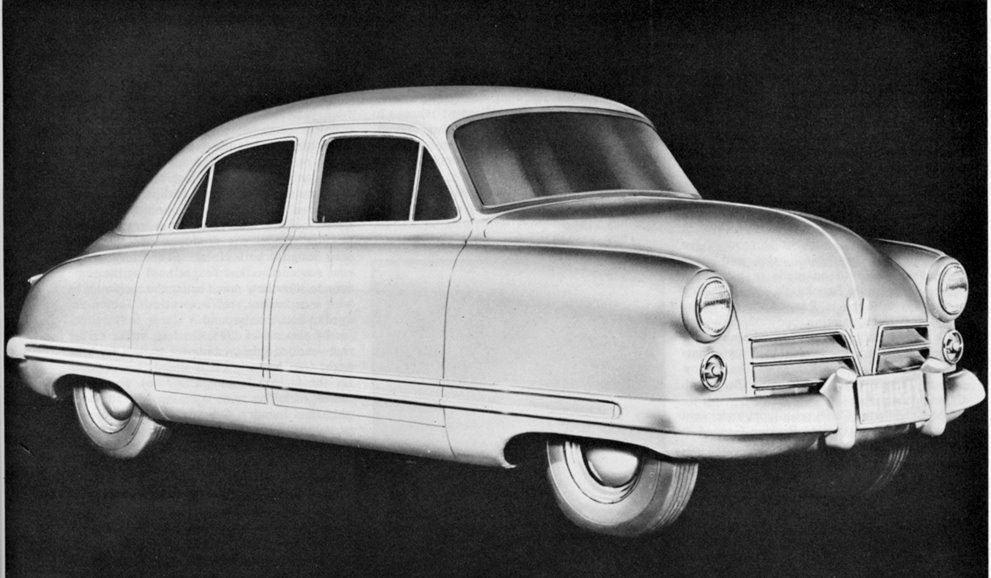
The Chevy Cadet was a compact car prototype created by Earle S. MacPherson, who headed up General Motors (GM) small car projects at the time. Sadly, it was cancelled at the 11th hour for reasons that today are questionable. It could have been a major success and featured many important innovations. (Compliments Chevrolet)
MacPherson’s Cadet was to be Chevy’s all-new compact class car, much like the Henry J was to the Kaiser line of automobiles. Most important is that MacPherson’s effort took place in 1945 when the car and truck manufacturers all got the green light to restart production of cars and trucks for everyday consumers. In prior years all U.S. car and truck manufacturers followed the 1942 WWII government mandate to stop regular highway vehicle production and concentrate on war vehicles, including air, water and land.
With the war coming to an end in ‘45 and the troops coming home, MacPherson knew America was ready for all-new cars. Further, considering automobile production in 1941 totaled a record 3.5-million vehicles sold, it was clear from a production standpoint that any and all new cars would be gobbled up by very happy post-WWII American individuals and families (yes, the start of the baby-boomer generation).
However, completely re-tooling from, for example, a tank platform back to car production was no easy or quick task. In reality, it took car manufacturers several years to release all-new cars yet surprisingly, by 1949 the 1941 sales record was broken as new cars were showing up in droves at the dealers and selling quickly.
Thus, and to regress a bit, in late 1946 Chevy was fully ready to mass produce the new Chevy Cadet, not to ever be confused with the Opel Kadett. MacPherson’s compact car would ride on a 108-inch wheelbase, weigh just 2,200-lbs., and seat four adults comfortably. Under the hood sat a 133 cubic-inch inline-6 cylinder that developed 65-horses and hooked to a 3-speed manual transmission. The Cadet would utilize very small 12-inch tires, necessary for good steering response and allowing the use of fender skirts front and rear on the nicely styled car.
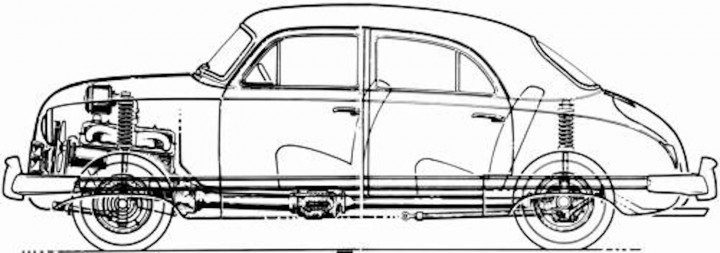
This diagram of the Chevrolet Cadet shows some interesting mechanical advancements, including the MacPherson strut suspension and a 3-speed transmission under the front seat. Two driveshaft style torque tubes connected the transmission. (Compliments Chevrolet)
Novel was the original MacPherson coil spring over shock absorber strut that sat in a tower (lust like today’s) and the fact that the 3-speed manual transmission sat under the front seat and utilized two driveshaft torque tubes to send the power from the engine to the transmission, and then again to the rear end gears. (See original diagram layout attached.)
With an expected retail of $1,000, returning veterans and families were prime prospective consumers, they being the same demographic that bought hundreds of homes at the soon to come Levittown village housing booms in New Jersey and Pennsylvania. It was clear they could easily park a new Cadet in their driveway, but trouble was brewing at GM headquarters.
In early 1947, with everything ready to go, corporate heads at GM decided to cancel the Cadet due to what they called too much of an initial investment and worrying that the Cadet would not meet the $1,000 retail price expectation. Three prototypes were built utilizing the four-wheel strut suspension. A fourth Cadet was built with a solid rear axle, against MacPherson’s wishes. It was just one of the many internal disagreements that resulted in the car not coming to market.
Unhappy with the decision to cancel the Cadet, MacPherson left GM in September of 1947 and immediately accepted a position with Ford. By 1952 he was Ford’s chief engineer, a position he retained until his retirement in May of 1958. MacPherson passed away in his sleep in 1960 at age 69.
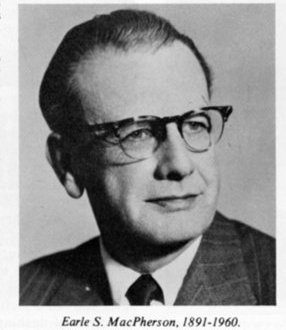
Earle S. MacPherson was an Illinois native and worked for several major car companies. He passed away in 1960 after a celebrated and respected career at Ford as its chief engineer. (Compliments Ford)
To this day, many feel the Chevy Cadet would have been a huge success, especially with its novel advanced suspension system, roomy interior, low price, and overall great handling.
Earle MacPherson left a major legacy in automotive engineering; and thanks to him, the world of automobiles is all the better for it.
Thank you also Frank Burke for your very kind words.
(Greg Zyla is a syndicated automotive writer. He welcomes reader questions and comments on auto nostalgia, collector cars and motorsports at greg@gregzyla.com.)

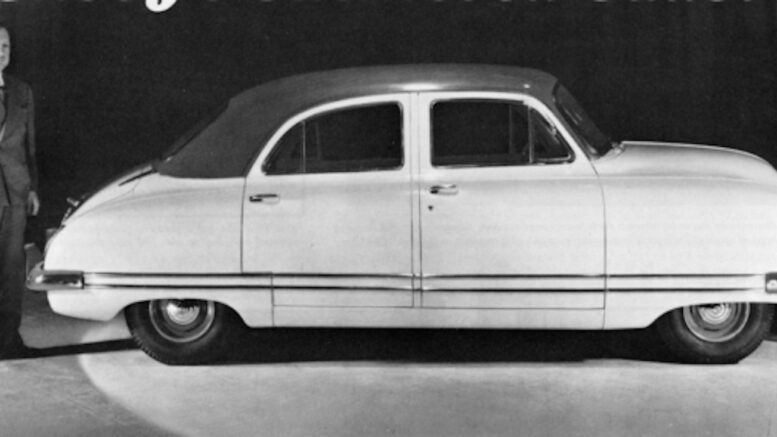

Be the first to comment on "Car Collector Corner; Former announcer / racer recalls the ill-fated, never produced Chevy Cadet"